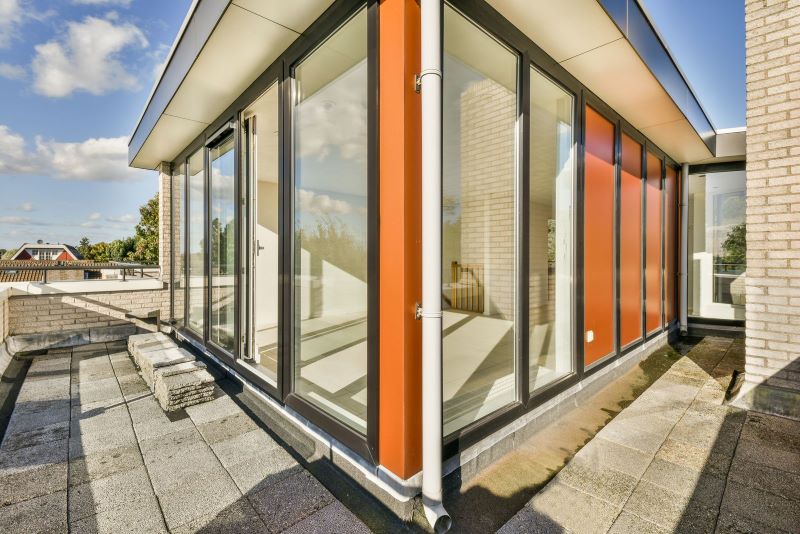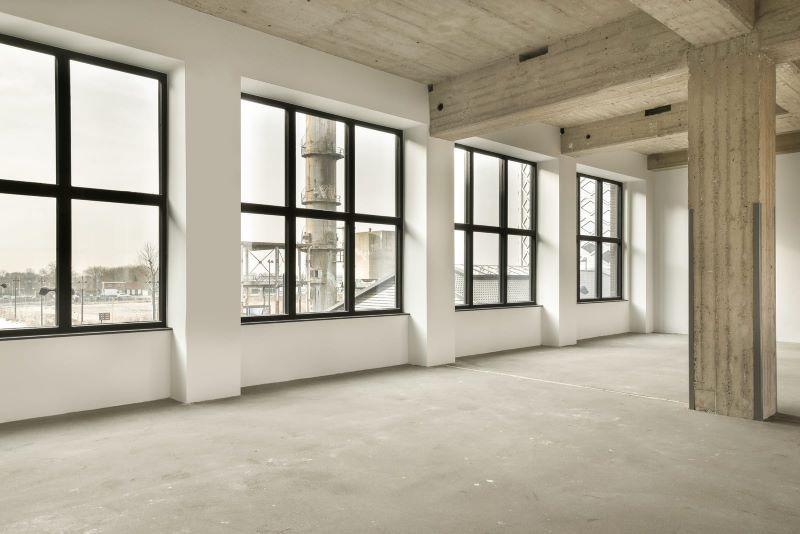Vinyl vs Fiberglass Windows: Which Is Better for Your Home?
Explore the differences between fiberglass and vinyl windows to make an informed decision on the best choice for your home’s needs.

When renovating or building a new home, choosing the right windows is crucial. Windows not only affect the appearance of your home but also its energy efficiency and maintenance needs. Two popular materials in the window market are fiberglass and vinyl. Each offers distinct advantages and some limitations, making the choice between them significant for homeowners.
Understanding the properties of fiberglass and vinyl windows can help you make a more informed decision. While both materials are prevalent in modern homes, they cater to different priorities and budgets. Let’s explore the fundamental differences between fiberglass and vinyl windows to see which might be the better fit for your specific needs.
Fiberglass Windows: Durability and Efficiency
Fiberglass windows are a top choice for homeowners seeking long-lasting and energy-efficient solutions. These windows offer several advantages that make them a superior option for various climates and settings.
Exceptional Durability
Fiberglass is known for its strength and resilience, which translates into outstanding longevity for windows made from this material:
- Resistant to Warping: Unlike wood or vinyl, fiberglass does not warp, crack, or swell with temperature changes.
- Minimal Expansion and Contraction: The material's low thermal expansion rate helps maintain its integrity and ensures a tight seal throughout seasonal temperature variations.
- Corrosion Resistant: Fiberglass is unaffected by salt air, making it ideal for homes in coastal areas.
Superior Energy Efficiency
The composition of fiberglass windows contributes significantly to their energy efficiency, helping to reduce heating and cooling costs:
- Thermal Insulation: Fiberglass frames are composed of hollow strands filled with air, providing excellent insulation properties.
- Long-Term Cost Savings: Although initially more expensive, the energy savings over time can offset the higher upfront cost.
Versatility in Design
Despite their strength, fiberglass windows are remarkably adaptable and can be designed to fit any home’s aesthetic:
- Paintable Surfaces: Homeowners can paint fiberglass to match or update their home’s color scheme.
- Variety of Styles: Available in a range of styles, from traditional double-hung to contemporary casement designs, fiberglass windows can complement any type of architecture.
Low Maintenance Needs
Fiberglass windows require minimal upkeep, which is a significant advantage for those looking to reduce ongoing maintenance costs:
- No Need for Repainting: The color is integrated into the material, so scratches and dents are less noticeable, and there is rarely a need for touch-ups.
- Easy to Clean: The smooth surface of fiberglass is easy to clean with just soap and water.
Fiberglass windows represent a smart investment for homeowners focused on durability, efficiency, and aesthetics. Their ability to maintain structural integrity and insulation properties over time makes them a practical choice for any setting, enhancing the comfort and value of a home.

Vinyl Windows: Cost-Effectiveness and Ease of Maintenance
Vinyl windows offer a practical and economical choice for homeowners, balancing initial affordability with minimal upkeep. Their popularity stems from several key benefits that make them appealing for a variety of residential settings.
Affordable Quality
Vinyl windows are celebrated for their cost-effectiveness, providing a budget-friendly option without compromising on quality:
- Lower Initial Costs: Compared to fiberglass and wood, vinyl windows are more affordable, making them an excellent choice for homeowners on a budget.
- Energy Savings: Equipped with good insulation properties, vinyl windows can help reduce heating and cooling costs, contributing to their overall value.
Reduced Maintenance Requirements
One of the standout features of vinyl windows is their ease of maintenance, which saves time and money over the lifespan of the windows:
- No Painting Needed: Vinyl windows come in a variety of colors, and their color is consistent throughout the material, which means scratches do not show easily, and they never require painting.
- Resistant to the Elements: Vinyl is resistant to moisture and humidity, making it ideal for areas prone to these conditions. It does not rot, warp, or corrode, which contributes to its longevity.
Energy Efficiency Enhancements
Vinyl windows contribute to a home’s energy efficiency, thanks to their design and material properties:
- Multi-Chambered Frames: The frames of vinyl windows often include multiple chambers that enhance thermal resistance, effectively reducing energy transfer.
- Customizable Glass Options: Homeowners can choose double-glazed or triple-glazed glass for added insulation, further enhancing the energy efficiency of vinyl windows.
Simplicity and Functionality
Vinyl windows are designed for ease of use and functionality, providing comfort and practicality in their operation:
- Tilt-In Design: Many vinyl windows feature a tilt-in design for easy cleaning, allowing both sides of the glass to be cleaned from inside the home.
- Durable Hardware: The hardware used in vinyl windows is generally rust-proof and designed to operate smoothly for many years with minimal maintenance.
Vinyl windows are a sensible choice for those seeking an economical, low-maintenance solution. They offer a combination of affordability, energy efficiency, and ease of maintenance that makes them a favorite among many homeowners. Their durability and range of styles can suit various architectural designs, ensuring they remain a popular choice in the window market.
We talked with Window Utopia about the advantages of vinyl windows, and they highlighted their cost-effectiveness and ease of maintenance as major benefits. They noted that vinyl windows are not only affordable but also resist fading, cracking, and peeling, which reduces the need for upkeep and repairs. Plus, their excellent thermal properties can significantly lower heating and cooling costs, making them an economically smart choice for homeowners.
Vinyl vs. Fiberglass Windows: Comparing Aesthetic Flexibility
When choosing between vinyl and fiberglass windows, aesthetic flexibility plays a crucial role, especially for homeowners concerned with design and curb appeal. Each material offers distinct benefits and limitations regarding customization and overall appearance.
Customization and Color Options
The ability to match or complement a home's existing design is important for window replacements or new installations:
- Vinyl Windows: Typically available in a range of pre-fabricated colors. Vinyl is not ideal for painting, so while the color selection is diverse, what you choose is generally final.
- Fiberglass Windows: These can be painted, offering limitless color options. This flexibility is perfect for homeowners who anticipate changing their home's color palette or who prefer specific hues that match their decor.
Style and Design Variability
The architectural style of a home can greatly influence the choice of window material due to the different design capabilities of vinyl and fiberglass:
- Vinyl Windows: Often seen in standard double-hung and slider varieties, vinyl is versatile but may lack the unique, customized designs that can be achieved with other materials.
- Fiberglass Windows: More robust in construction, fiberglass can support larger and more complex window styles, including full-length picture windows and intricate custom shapes that maintain energy efficiency and durability.
Textural and Finish Differences
The finish and texture of the window material can also affect the visual appeal and align with different architectural styles:
- Vinyl Windows: They have a glossy, smooth finish that suits modern and contemporary homes well but may not blend seamlessly with traditional or historical exteriors.
- Fiberglass Windows: These can mimic the texture of natural materials like wood, making them suitable for classic or rustic home designs where such detailing is favored.
Longevity and Aesthetic Endurance
Maintaining the original appearance over time is crucial for ensuring that windows continue to enhance a home's curb appeal:
- Vinyl Windows: Although they resist fading, scratches and damage can be more visible due to the color being only surface deep.
- Fiberglass Windows: The paintable surface allows for touch-ups and color changes, which can help mitigate the appearance of wear and keep windows looking new longer.
When evaluating vinyl versus fiberglass windows for their aesthetic flexibility, fiberglass often provides a higher degree of customization through its paintable nature and ability to mimic other materials. Vinyl offers a practical, low-maintenance solution with a wide range of styles and colors, suitable for modern home designs and those not requiring bespoke window solutions. Choosing between the two materials should consider the specific style needs of the home and the homeowner's long-term aesthetic goals.
Speaking with Affordable Window Replacement in Phoenix, they point out that, "both vinyl and fiberglass windows offer exceptional aesthetic flexibility, fitting various architectural styles with a range of color and finish options. However, if they had to choose one for their own home, they'd lean towards fiberglass for its slight edge in durability and its ability to mimic the look of natural wood without the maintenance. Fiberglass windows also offer superior resistance to warping and shrinking, making them a top choice for long-term performance and aesthetics.

Performance and Environmental Impact
Evaluating the performance and environmental impact of window materials is key for homeowners who prioritize energy efficiency and sustainability. Both vinyl and fiberglass windows offer specific benefits that can influence a home's energy consumption and ecological footprint.
Energy Efficiency
Both window types provide good insulation, but their materials can affect their overall energy performance:
- Vinyl Windows: Typically equipped with energy-efficient features such as double glazing and low-E coatings, vinyl windows offer excellent thermal insulation. This helps reduce heating and cooling costs by maintaining a consistent indoor temperature.
- Fiberglass Windows: The material's intrinsic properties allow for even tighter seals and minimal thermal transfer. Fiberglass frames can accommodate thicker, triple-pane glass that further enhances energy efficiency and noise reduction.
Sustainability
The environmental impact of manufacturing, lifecycle, and disposal of window materials is crucial for eco-conscious decision making:
- Vinyl Windows: Made from PVC, which requires significant energy to produce and can release harmful chemicals if burned. However, many manufacturers are now recycling old vinyl windows to mitigate waste.
- Fiberglass Windows: Typically consists of glass fibers and a resin, which may include some recycled content. Fiberglass is less prone to expansion and contraction, which means a longer lifespan and less frequent replacement.
Contribution to Green Building Certifications
The choice of windows can affect a building’s ability to meet green building standards such as LEED or ENERGY STAR ratings:
- Vinyl Windows: Energy-efficient vinyl windows can help buildings meet ENERGY STAR standards, which can lead to savings on utility bills and potential tax rebates.
- Fiberglass Windows: The durability and energy efficiency of fiberglass are recognized in green building certifications. Their ability to be custom-sized reduces gaps and minimizes air leakage, a key factor in building energy performance.
Impact on Indoor Air Quality
The materials used in window construction can affect the air quality inside a home:
- Vinyl Windows: Some concerns exist regarding the off-gassing of chemicals from new vinyl materials, which can contribute to indoor air pollution.
- Fiberglass Windows: Generally regarded as inert, fiberglass does not off-gas, making it a potentially healthier choice for indoor environments.
When considering the performance and environmental impact of windows, it’s essential to balance factors like energy efficiency, material sustainability, and indoor air quality. Both vinyl and fiberglass windows have their advantages, but the choice may depend on specific environmental priorities, the desired lifespan of the windows, and the overall impact on the building’s energy efficiency.
So, should you Choose Fiberglass Windows or Vinyl Windows?
Choosing between fiberglass and vinyl windows ultimately depends on your specific needs, budget, and preferences. If long-term durability and aesthetic flexibility are your top priorities, fiberglass might be the best choice. On the other hand, if initial costs and maintenance are your main concerns, vinyl could be more suitable.
What are your key considerations when choosing materials for home improvements?
Find the perfect Materials for your project
This section is designed to simplify the process of choosing the right materials, whether for building, remodeling, or decorating, by providing detailed descriptions, comparisons, and practical tips. Here, you'll find valuable insights and expert recommendations to ensure the materials you choose enhance the durability, aesthetic appeal, and functionality of your project.



